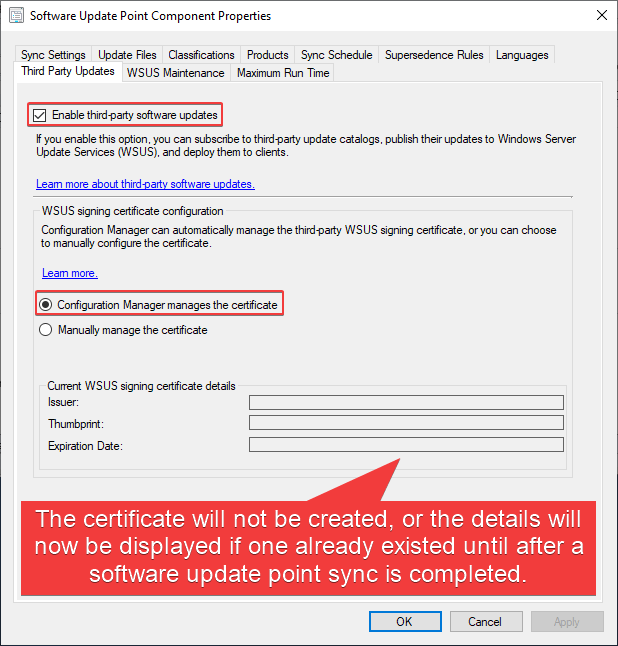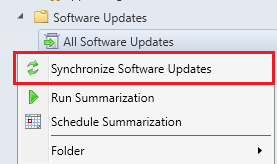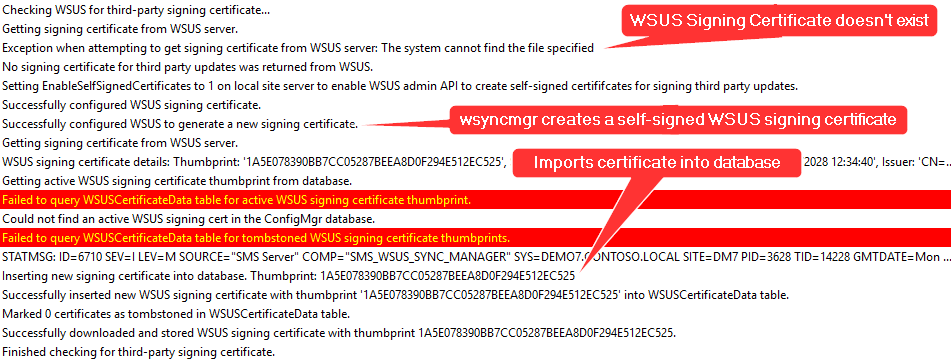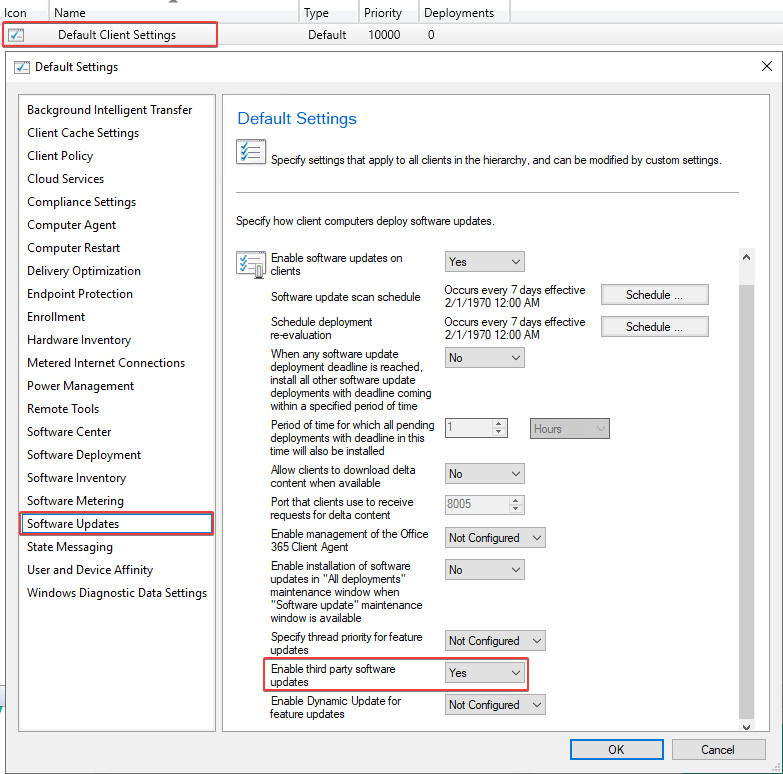Deploying the WSUS Signing Certificate to devices is a requirement for devices to trust and install third-party software updates from standalone WSUS or a Configuration Manager environment.
If the certificate is not installed within the Trusted Root and Trusted Publishers certificate store, you will receive error code 0x800b0109 when attempting to install third-party software updates on devices.
Here’s the list of options covered in the article for deploying the WSUS Signing Certificate to devices:
- Use the Configuration Manager 1806+ Certificate Management Feature
- Use Group Policy to Deploy the WSUS Signing Certificate
- Using a Configuration Manager Task Sequence During Imaging
- Use a Configuration Manager Configuration Item
Option 1: Use the Configuration Manager 1806+ Certificate Management Feature
If your Configuration Manager site and clients are running current branch 1806 or newer, the easiest option is to enable the new built-in option within the software update point for Configuration Manager manages the updates.
To enable this option, perform the steps below:
- In the Configuration Manager console, go to the Administration workspace. Expand Site Configuration, and select the Sites node.
- Select the top-level site in the hierarchy. In the ribbon, click Configure Site Components, and select Software Update Point.
- Switch to the Third-Party Updates tab. Select the option Configuration Manager manages the certificate.
- A new certificate of type Third-party WSUS Signing will be created in the Certificates node under the Security node in the Administration workspace.
After performing the steps above, validate the certificate is created/imported:
- Trigger a software update point synchronization by right-clicking the All Software Updates node, and clicking Synchronize Software Updates.
- If you review the wsyncmgr.log, you should see some details about the certificate being imported and created.
- If the certificate was configured successfully, if you re-open the Third Party Updates tab, you should see the certificate details.
Lastly, you need to enable the client settings to enable third party updates on clients:
- In the Configuration Manager console, go to the Administration workspace and select the Client Settings node.
- Select the default client settings, an existing custom client setting, or create a new one.
- Select the Software Updates tab on the left-hand side. If you don’t have this tab, make sure that the Software Updates box is enabled.
- Set the Enable third-party software updates to Yes.
- Validate the client settings is deployed to all devices
You can also review the step-by-step video guide for deploying the WSUS certificate using Configuration Manager below:
If your software update point is remote from your top-level site server and the software update point is not configured for SSL, the option within Configuration Manager to Automatically manage the WSUS signing certificate will not work and you will receive an error in wsyncmgr.log Remote WSUS connection is not HTTPS. This prevents software update point from getting the signing certificate for third-party updates. For more details about this scenario, please see the following Microsoft Doc Additional requirements when the SUP is remote from the top-level site server.
Option 1.1: Validate Client Setting Priority is Correct
If you enabled the client setting to enable third party software updates, performed a machine policy sync and software update deployment evaluation cycle, and the client still didn’t install the WSUS signing certificate, please perform the following check.
View the result client settings on the specific device, not installing the certificate from the ConfigMgr console’s Devices node.
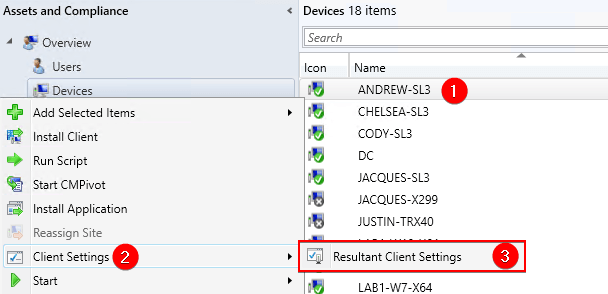
If the result client settings shows the Enable third party software updates as No, that means there another client setting taking priority of the policy you deployed to set this value to Yes.
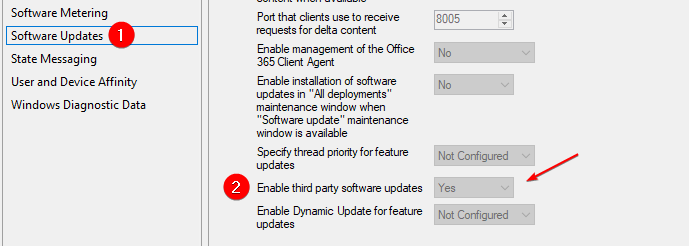
You can view all the client settings deployed to a specific device in the Client Settings tab.
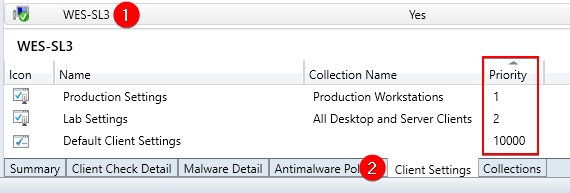
When troubleshooting client certificate installation issues, in addition to the client settings priority, you need to ensure the client version is also ConfigMgr 1806 or newer. The client version for build 1806 is 5.00.8692.1003
Important: By default, the Enable third party software updates setting is configured to No for any existing policies. This often causes machines where the policy is deployed to be overwritten by other client settings deployed to the same device. When you have multiple custom client settings, they are applied according to their order number. If there are any conflicts, the setting that has the lowest order number overrides the other settings. To change the order number, on the Home tab, in the Client Settings group, choose Move Item Up or Move Item Down. (Microsoft Docs)
Option 2: Use Group Policy to Deploy the WSUS Signing Certificate
You can also use group policy to deploy the WSUS Signing Certificate to devices within your environment. This option is helpful if you can’t manage the certificate using the Configuration Manager built-in option.
Please see the PDF guide below for a step-by-step guide for how to deploy the WSUS signing certificate using group policy to devices.
Deploying the WSUS Signing Certificate Using GPO (PDF Guide)
You can also review the step-by-step video guide for deploying the WSUS signing certificate using GPO below:
Option 3: Using a Configuration Manager Task Sequence During Imaging
Another option is to deploy the certificate within a Configuration Manager task sequence step or a package deployment that uses certutil.exe to import the WSUS Signing Certificate to the Trusted Root and Trusted Publishers certificate store.
For instructions using this method, please review the following knowledge base article.
Option 4: Use a Configuration Manager Configuration Item
Another option is to deploy the certificate within a Configuration Manager using a configuration item.
For instructions using this method, please review the following knowledge base article.

